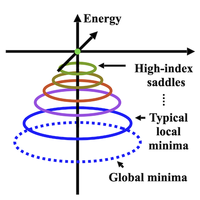Imagine a world where complex problems in fields such as logistics, finance, and artificial intelligence can be solved faster and with less energy than they can now. This is the promise of combinatorial optimization, a field that seeks to find the best solution to a problem among many possibilities. Recent promising experiments with unconventional analog hardware designs have ignited broad interest in physics-based approaches to tackle these challenges. However, a theoretical understanding of their performance remains elusive. In this study, we develop a theoretical framework to understand how unconventional physical solvers perform, focusing on the coherent Ising machine, a network of optical oscillators.
By applying concepts from statistical physics and probability theory, we analyze the machine’s behavior when solving random optimization problems. These problems, while simple to describe mathematically, are difficult to solve. We find that the machine’s problem-solving process is like navigating a constantly changing random landscape, where the goal is to find the deepest valley. Our theory reveals interesting phase transitions in this landscape’s structure, providing insights on how to navigate the machine toward better solutions more efficiently.
This work lays the foundation for future theoretical studies on how continuous dynamical systems can serve as unconventional problem solvers. While we focus on purely random problems, the next step will be to adapt our approach to more realistic, structured problems encountered in real-world applications.





Add Comment